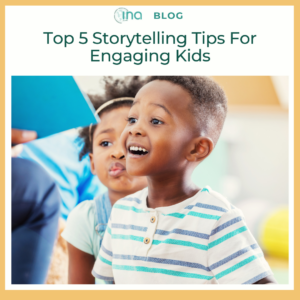 By Jane Turner
By Jane Turner
Storytelling has existed for a long time and is a big part of our human lives. For kids, though, it’s one of the most exciting things to engage them. Whether you think you’re good at storytelling or not, kids will always want to listen to a story. Their curiosity and keenness to listen to a good story are second to none. They almost consider it a duty you should perform as part of raising them, and you ought to do it well. So, here are five storytelling tips for engaging your kids.
- Tell the stories you love
There’s nothing better for a listening child than to hear their caregiver tell a story they’re emotionally invested in. It doesn’t matter if it’s from your brain (experience) or a book. The first thing that interests them is your enthusiasm to share the story and your love for what you’re saying.
So, whatever story you’re telling has to be something you relate to personally or something that’s a shared interest. Make sure you’re choosing a story that can stimulate the child and bring out several questions..
- Tell your stories with props
Adding props to your storytelling adds an extra layer of spice to it. It’s a different element to the story that helps the child visualize the settings and characters more effectively. It’s also more fun for them. For instance, if you’re telling a story about royalty, you might like to get your props, such as a crown. You should bring out your wand if you’re telling a wizard story. It makes it more relatable and enjoyable for them.
If you’re dealing with a younger child, you could create a story box containing several objects that you can incorporate into your stories.
- Be expressive
You should ensure your body language and voice are expressed properly when you tell your stories. Every story should have its tone, and there should be an emotion attached to the story. This helps your child understand how the character feels, their settings, and how they feel at different points of the story. Admittedly, this isn’t going to be easy, but it’s not something impossible. You can start by adding expressions to your voice while reading and trying impressions.
- Structure your story
When telling your story, it’s important to give it a recognizable structure for the child to follow. The first thing to do is to make sure that the story is short and easy for them to remember. Also, make it a story that you know very well. This means you should prepare yourself before you start each storytelling session. If you’re going to read from a book, make sure you’ve read the book three times before and are familiar with the settings, plot and characters. This makes it easier for you to structure the story appropriately for the child.
- Ask the child questions
You should ask the child questions as often as possible during the storytelling session to see how much they’re following your story and if they understand it. Ask them about the plot, character, and setting. Make sure your questions are open-ended, so they can give a detailed answers and praise them for their answers, especially when they’re correct and detailed. This helps you ascertain their interest in the story they’re listening to and how much they enjoy it.
Conclusion
Storytelling is an important way to bond with your child. It’s an effective part of raising a child, so it’s important that you learn how to do it and do it right. The tips in this article will help you engage your child better during your storytelling sessions.
Jane Turner is a freelance writer. She’s also a writer for assignmenthelper.com.au and values freedom and initiative. She believes people are strong, independent beings who can take responsibility for their lives. Jane is a lover of kids and is passionate about raising them right.
